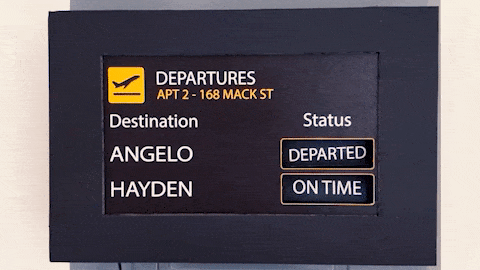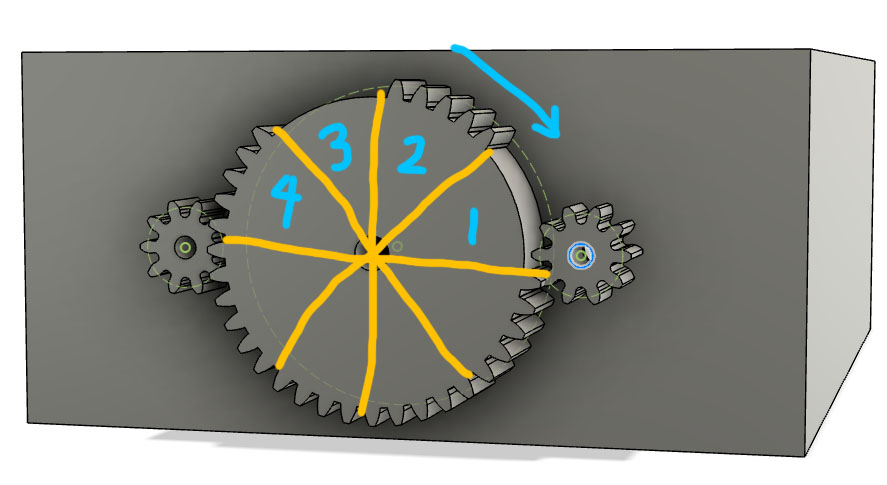Departure Board
A project by Angelo Lu

To be totally honest, this was an idea I had in the shower and I thought it would be a fun weekend project.
I used to live in a house with 5 other people. We would yell at each other, only to realize that the individual wasn’t home. What if there was a visual board showing who was around?
Now this information could have been presented in many many formats: scrolling ticker, lights, a Weasley family clock, etc. I chose to make a faux-flipboard style departure board that can be found at train stations and airports because I like the retro, analog look.
Mechanicals
Since this was meant to be a quick project, I started by digging through my parts bin but could only find one working servo. I now only live with one other person so I thought there might be a way to use this one servo to represent the 4 different states the house could be in:
- Roommate away, I’m away
- Roommate home, I’m away
- Roommate away, I’m home
- Roommate home, I’m away
I still wanted the flipping motion, however. So, I tried to design a gear set that would selectively engage one of the pinions so that it doesn’t move for each state change. I think the system below could work: 
I noticed, however that these teeth are tiny and it’s unlikely that my 3D printer would have the precision and accuracy to pull this off. At this point I was ready to give up on the flipping motion and started digging through the parts bin again for some lights to use instead.
It was here in my disappointment that I stumbled upon a pack of microservos that I had previously missed! A little bit of redesign later and here is the final mechanical design for the flipping mechanism:  I designed the mounts for the two independently controlled microservos by measuring the servos and creating the complimentary form, leaving room for clearance. I planned to screw the servos in place, then glue the axles for the rotating labels onto the moving part of the servo.
I designed the mounts for the two independently controlled microservos by measuring the servos and creating the complimentary form, leaving room for clearance. I planned to screw the servos in place, then glue the axles for the rotating labels onto the moving part of the servo.
The sign was mostly cut from foam board I had lying around.
Software
To control the servos, I used an Adafruit Feather HUZZAH powered over USB. The HUZZAH has an ESP8266 on board for WiFi.
To determine if either of us are at home, the device will make calls to the Meraki API for devices currently connected to our network. I have hardcoded my phone’s MAC, as well as my roommates phone’s MAC into the code so it can act appropriately.
Since I am only using two microservos and don’t anticipate any stalling, I can get away with using power from the board to drive the servos. Anything more and you would definitely need a regulator.
Improvements
- Use a more aesthetically pleasing material, such as wood or metal for an industrial look
- Decrease how far the flipping labels are recessed, allowing the entire device to be slimmer
- 3D print the labels and use straighter dowels for higher precision, leading to a better presentation overall
- Make calls to my own serverless API instead of the Meraki API directly for better maintenance and updating
- Since this relies on MAC address tracking, this is likely to break once OSes use randomized MAC upon each connection to a known SSID
ps. If you make something similar to this, please put it away from any windows so burglars can’t tell if the house is empty.